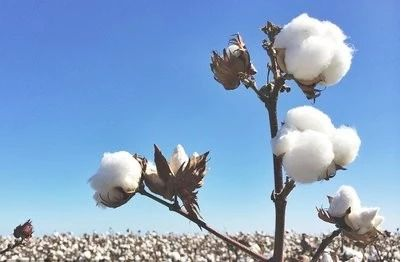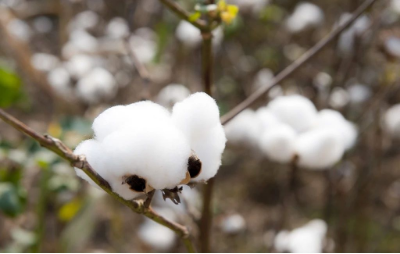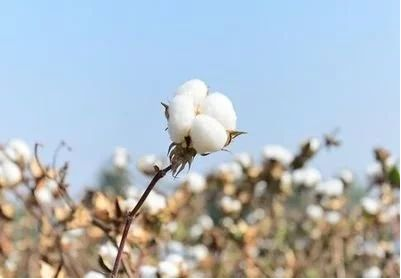Application of plant growth regulator on cotton
Time:2023-01-30 Follow:889
According to the requirements of cotton growth and development and production objectives, from the beginning of seed germination, through several actions of one or more plant growth regulators at different growth stages, targeted and systematic adjustment of the whole growth period of crops can be achieved. Utilize the compound effect of regulators to coordinate various physiological processes in the body, solve various problems in crop growth and production, and achieve multiple objectives of production.
1、 Meperidium
Mepivonium, or metamide, is a plant growth regulator. It can inhibit cell elongation and inhibit the biosynthesis of gibberellin. Promote the absorption of roots, stems and leaves, promote the synthesis of chlorophyll in crops, inhibit the elongation of main stems and fruit branches, make the plant compact, delay the sealing of rows, prevent flourishing, improve the ventilation and light transmission in the field, and help to enhance photosynthesis; Control the excessive growth of crops and reduce the consumption of ineffective nutrients; Enhance the root activity of crops, so as to make the roots developed, the main root increased, the lateral root increased, and improve the resistance of crops to stress, lodging, drought and waterlogging; Rationally adjust and distribute the contradiction between vegetative growth and reproductive growth, promote reproductive growth, reduce flower and fruit abscission, mature early, improve fruit quality, and increase production and income.
2、 Chlormequat
The action mechanism of this product is to inhibit the biosynthesis of gibberellin in the plant, and the action site is to inhibit the production of kaurene, resulting in the inhibition of endogenous gibberellin biosynthesis. It is an antagonist of gibberellin. Its physiological function is to control plant growth, resist lodging, enhance photosynthesis and improve stress resistance. Its physiological function is to control plant growth, resist lodging, enhance photosynthesis, improve stress resistance, improve quality, and increase yield, which can effectively regulate the growth of cotton.

3、 Naphthylacetic acid
This product is a plant production regulator. It is used for cotton and can be absorbed internally. It has the functions of protecting flowers and fruits, improving fruit setting rate, promoting fruit hypertrophy and early ripening, and has a certain effect of controlling cotton growth and increasing yield. It is the main ingredient of rooting powder on the market.
4、 Indobutyric acid
This product is a plant endogenous auxin, which can enter the plant body through leaves, tender epidermis and seeds, and be transported to the functional part with the nutrient flow. It can induce the differentiation of plant root primordia, rapidly open roots, accelerate root growth and development, greatly increase the number of capillary roots and the length of lateral roots, which is conducive to the formation of a large and strong plant root group, shorten the days of plant transplanting and turning green, and significantly improve the survival rate and stress resistance of transplanting; Promote tillering and strong seedlings; Promote root regeneration, strengthen plants, increase yield and improve quality.

5、 Gibberellic acid
This product is a plant growth regulator. Endogenous gibberellin is widely present in plants, which is one of the important hormones to promote plant growth and development, and an antagonist of growth inhibitors such as paclobutrazol and chlormequat. The drug can promote cell, stem elongation, leaf expansion, parthenocarpy, fruit growth, break seed dormancy, change the ratio of female and male flowers, affect flowering time, and reduce flower and fruit abscission. When exogenous gibberellin is introduced into plants, it has the same physiological function as endogenous gibberellin. Gibberellin mainly enters the plant through leaves, twigs, flowers, seeds or fruits, and then transmits to the active parts for action. It can regulate the growth and increase yield of cotton.
6、 Prochloraz
This product can regulate and promote cotton. It can increase the content of chlorophyll, protein and nucleic acid in the plant; Increase the photosynthetic rate and the activity of peroxidase and nitrate reductase; Improve the metabolism of carbon and nitrogen in the plant, enhance the absorption of water and fertilizer by the plant, and adjust the balance of water in the plant, thus improving the drought and cold resistance of the plant.

7、 Ethephon
This product is a growth regulator to promote plant maturity. After ethephon enters the plant body, it will release ethylene due to the PH size of plant tissue, promoting maturity, inhibiting elongation growth, promoting organ abscission, inducing flower bud differentiation, promoting germination, and promoting adventitious roots.
It is very stable in acid medium, but above pH4, it will decompose and release ethylene. Ethyl chloride enters the plant body through the leaves, bark, fruit or seeds of the plant, and then transmits it to the functional parts, and then releases Ethyl chloride, which can play the physiological functions of the endogenous hormone Ethyl chloride, such as promoting the maturity of cotton and the shedding of leaves, dwarfing the plant, changing the ratio of male and female flowers, and promoting the early opening of cotton bolls.
-
Prev:Null




